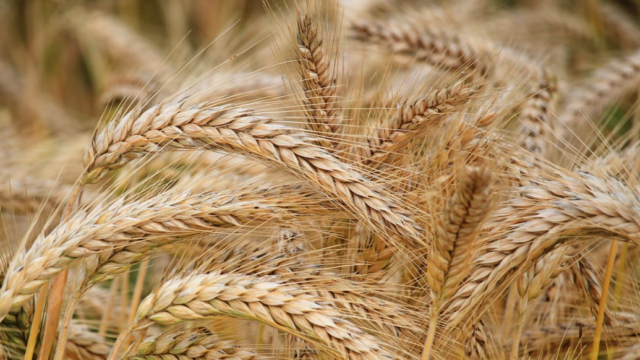Written by Richard Halleron from Agriland
 The Potash Development Association (PDA) has confirmed the value of grain analysis as a management tool within a tillage operation.
The Potash Development Association (PDA) has confirmed the value of grain analysis as a management tool within a tillage operation.
Soil analysis is one piece of the puzzle but is not the only measure that is worth considering.
The basic principles of phosphate (P) and potash (K) nutrition revolve around ensuring that soils contain sufficient nutrient.
Moreover, the correct pH is also important to ensure optimal availability of these nutrients.
By so doing, growers ensure that crops are provided with adequate daily quantities of the nutrients they need through the season – in order to meet the peak uptake requirements.
Although this is the theory, every soil will work slightly differently, and no two seasons are the same.
Just because a soil is at the target index, this does not necessarily mean it is able to access sufficient quantities, the PDA has advised.
A number of variables come into play in this regard. These include soil characteristics; texture; moisture content; temperature.
Another relevant factor is the root characteristic and profile of a specific crop. Issues that come into play here are depth; length; architecture; health; mycorrhizal associations.
Nutrient offtakes have been a part of P and K recommendations for decades.
Standard tables showing P and K recommendations at different soil indices are based on ‘typical’ yields for each of the crops listed. Within this figure is a two-part calculation.
One is based on the removal of nutrient by the crop. The other aims to build, maintain, or run down the soil index.
Significantly, recent work carried out by Agriculture and Horticulture Development Board (AHDB) staff has indicated that sampling at harvest is a more accurate measure of true off-takes based on site and season specifics.
Analysing the grain after harvest can help to indicate whether nutritional input decisions during the season where appropriate.
Data complied by NRM Laboratories reflects the grain analysis trends identified for harvest 2022, relative to 2021.
The figures show that there was a 4% lower N off-take, 8% lower off-take for P, and a 3% lower grain off-take for magnesium (Mg) last year, compared to the year previous. However, there was a 4% higher off-take for K.
Agrii agronomist, Tom Land, has also highlighted the value of tissue testing crops in order to their identify their exact nutritional requirements throughout the growing season.
As a consequence, growers get a clear and real-time picture of what is happening in a crop at any given point.
The tissue testing process can identify what nutrients are being taken up by a crop, allowing growers to make alterations to nutritional programmes to rectify any deficiencies.
Also Read: Academic urges government to takes needs of agri more seriously
The post Tillage: The potential role for grain analysis appeared first on Agriland.co.uk.
Continue reading on the Agriland Website...

Soil analysis is one piece of the puzzle but is not the only measure that is worth considering.
The basic principles of phosphate (P) and potash (K) nutrition revolve around ensuring that soils contain sufficient nutrient.
Moreover, the correct pH is also important to ensure optimal availability of these nutrients.
By so doing, growers ensure that crops are provided with adequate daily quantities of the nutrients they need through the season – in order to meet the peak uptake requirements.
Grain analysis
Although this is the theory, every soil will work slightly differently, and no two seasons are the same.
Just because a soil is at the target index, this does not necessarily mean it is able to access sufficient quantities, the PDA has advised.
A number of variables come into play in this regard. These include soil characteristics; texture; moisture content; temperature.
Another relevant factor is the root characteristic and profile of a specific crop. Issues that come into play here are depth; length; architecture; health; mycorrhizal associations.
Nutrient offtakes have been a part of P and K recommendations for decades.
Standard tables showing P and K recommendations at different soil indices are based on ‘typical’ yields for each of the crops listed. Within this figure is a two-part calculation.
One is based on the removal of nutrient by the crop. The other aims to build, maintain, or run down the soil index.
Significantly, recent work carried out by Agriculture and Horticulture Development Board (AHDB) staff has indicated that sampling at harvest is a more accurate measure of true off-takes based on site and season specifics.
Analysing the grain after harvest can help to indicate whether nutritional input decisions during the season where appropriate.
Data complied by NRM Laboratories reflects the grain analysis trends identified for harvest 2022, relative to 2021.
The figures show that there was a 4% lower N off-take, 8% lower off-take for P, and a 3% lower grain off-take for magnesium (Mg) last year, compared to the year previous. However, there was a 4% higher off-take for K.
Agrii agronomist, Tom Land, has also highlighted the value of tissue testing crops in order to their identify their exact nutritional requirements throughout the growing season.
As a consequence, growers get a clear and real-time picture of what is happening in a crop at any given point.
The tissue testing process can identify what nutrients are being taken up by a crop, allowing growers to make alterations to nutritional programmes to rectify any deficiencies.
Also Read: Academic urges government to takes needs of agri more seriously
The post Tillage: The potential role for grain analysis appeared first on Agriland.co.uk.
Continue reading on the Agriland Website...





